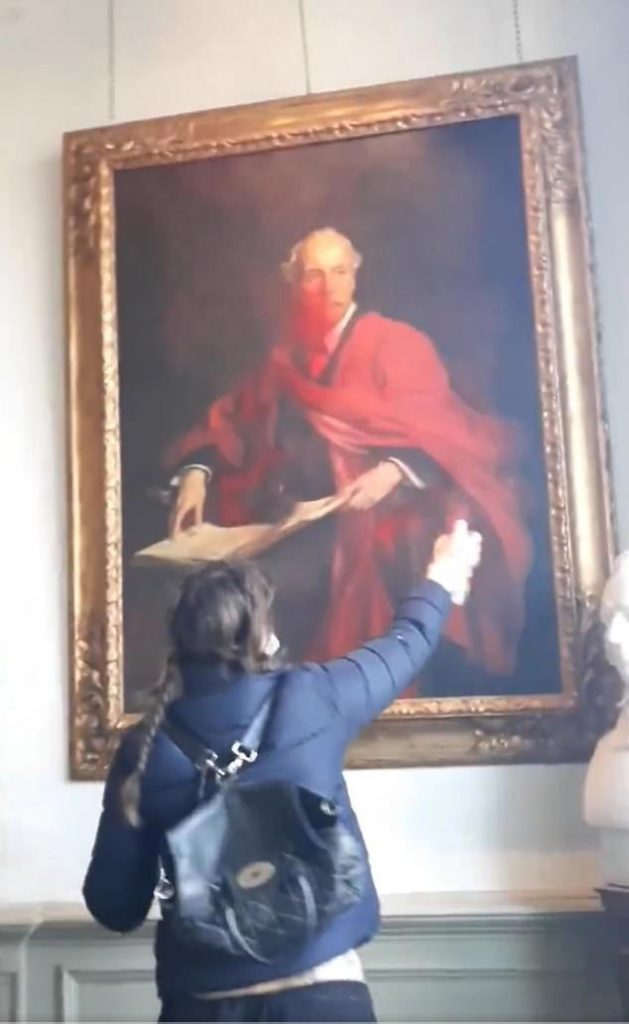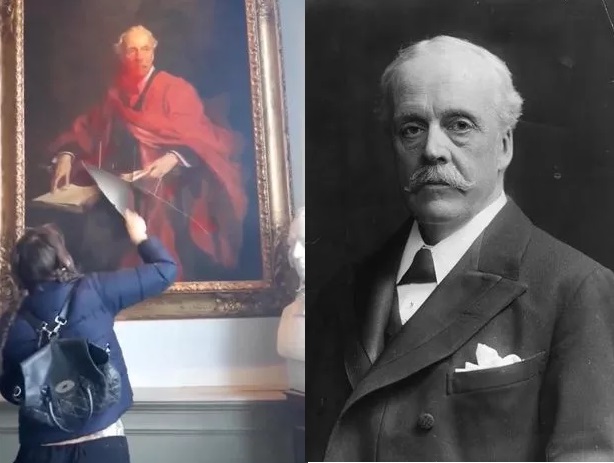Throughout history, art has served as a vivid witness to the essence of our existence, preserving cultures, experiences, and feelings for future generations. Whatever its history, the artwork is noteworthy since it’s the only thing we have left that reminds us of the past. A horrible incident occurred lately in the hallways of museums and galleries, where the responsibility for protecting our cultural legacy is dutifully maintained.
An act of devastation echoed throughout the art world and beyond tore a historical painting—a beacon of creation, a portal to another era—from the fabric of existence.
Following a lengthy history of climate action and activism against artwork, people destroy artwork for the sake of the Israeli-Palestinian conflict. A pro-Palestinian demonstrator vandalized Lord Balfour’s image at the University of Cambridge, sparking a global uproar. One of the group’s members can be seen spray-painting and cutting the Trinity College image in a video that Palestine Action shared on social media. A woman defaces the piece with crimson paint before slicing the canvas with a sharp tool.
The British government published the Balfour Declaration, which established the foundation of Israel in 1948 by calling for the establishment of a “national home for the Jewish people” in Palestine. The politician from the Conservative party signed it. The 1917 proclamation was enclosed in a letter from British Jewish leader Lord Rothschild to Balfour.
The police and Trinity College both acknowledged knowing about the incident. “Trinity College regrets the damage caused to a portrait of Arthur James Balfour during public opening hours,” a college representative stated. We’ve notified the cops. Any impacted member of the College community is eligible for support.”

Palestine Action issued the following statement: “Palestine Action ruined a 1914 painting by Philip Alexius de László inside Trinity College, University of Cambridge of Lord Arthur James Balfour – the colonial administrator and signatory of the Balfour Declaration.” They also stated that “an activist slashed the homage and sprayed the artwork with red paint”.
Philip Alexius de Laszlo painted the oil on canvas, presently kept at the University of Cambridge. It was finished in 1914.
Mona Lisa: Mysterious Story of a Painting, Secrets of a Treasure





